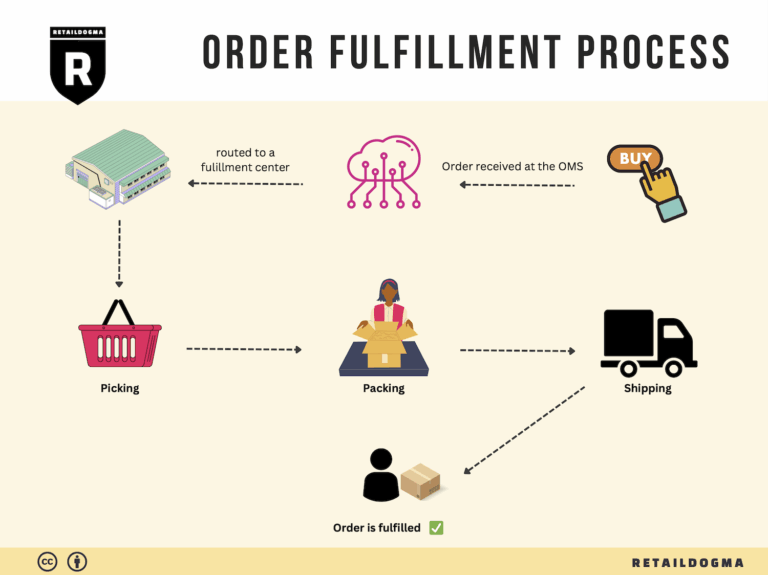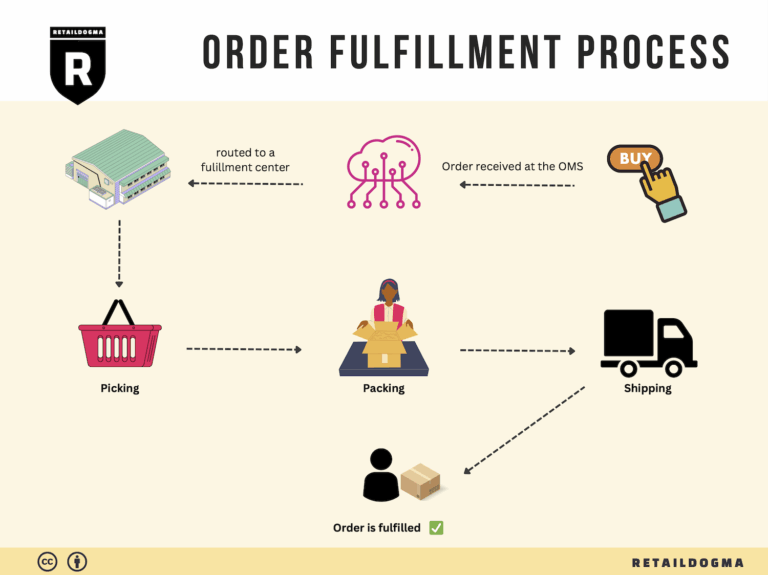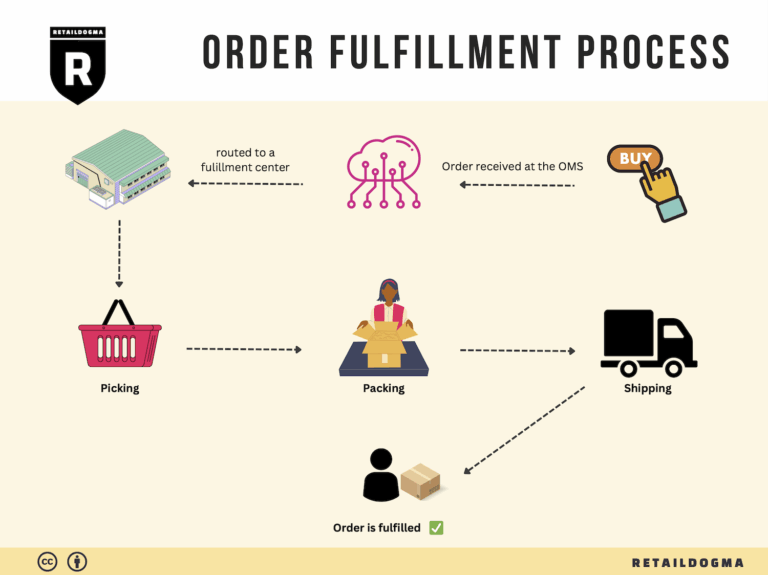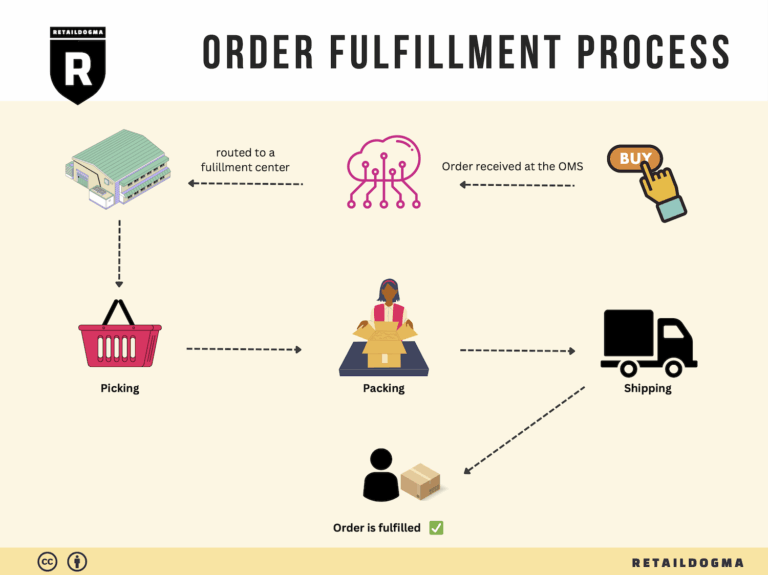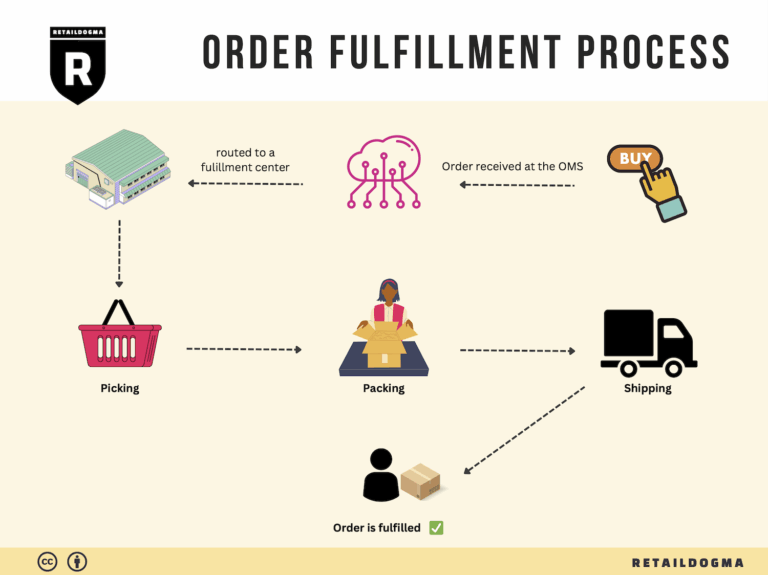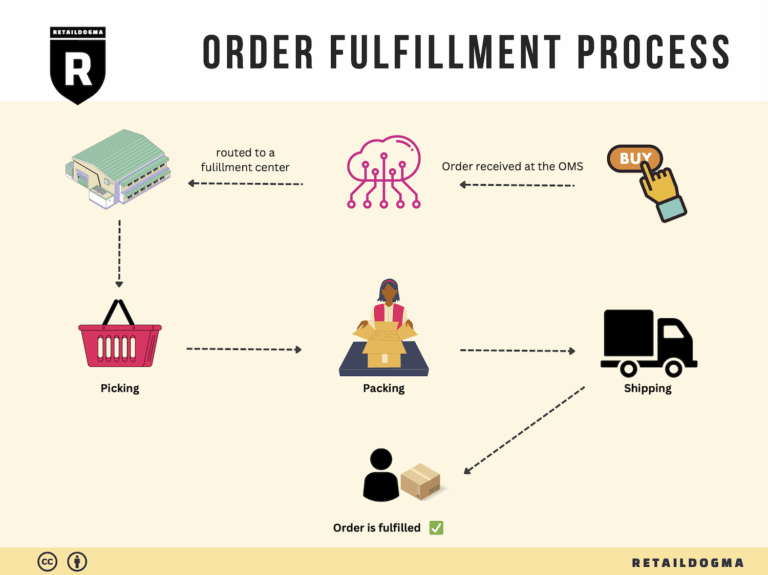Ecommerce Fulfillment Services: The Ultimate Guide (2025)
What is E-commerce Fulfillment? An Introduction for Growing Businesses
Understanding E-commerce Fulfillment
As your online business begins to grow, you might find yourself grappling with the overwhelming tasks of packing and shipping orders. The excitement of increasing sales can quickly turn into stress as you juggle inventory management, order processing, and customer satisfaction. This is where e-commerce fulfillment comes into play, offering a streamlined solution to get your products into the hands of your customers efficiently and effectively.
E-commerce fulfillment is essentially the process of getting a product to a customer after they place an order. It encompasses a variety of activities, including receiving inventory, storing products, picking and packing orders, and shipping them out. By outsourcing these logistics tasks to a fulfillment partner, you can free up valuable time and resources to focus on growing your business.
In this guide, we will explore the different models of fulfillment, including third-party logistics (3PL) and Fulfillment by Amazon (FBA), to help you understand which may be the best fit for your business. We will break down the core services typically offered in fulfillment, such as inventory management, order processing, and shipping logistics, providing you with a clear picture of what to expect.
Choosing the right fulfillment partner is crucial for your business’s success. We will discuss key factors to consider, such as location, technology integration, and customer service capabilities, to ensure that you select a partner that aligns with your operational needs and growth goals. Additionally, we will touch on pricing structures commonly found in fulfillment services, enabling you to assess the cost-effectiveness of various options.
The goal of this guide is to empower you to make informed decisions about your logistics and fulfillment strategies. By understanding the complexities of e-commerce fulfillment, you can optimize your operations, enhance customer satisfaction, and ultimately drive your business’s growth in an increasingly competitive market. Whether you are just starting to explore fulfillment options or are ready to scale your operations, this guide will provide you with the insights and practical advice you need to succeed.
What You’ll Learn In This Guide
- What is E-commerce Fulfillment? An Introduction for Growing Businesses
- The Order Fulfillment Process: From ‘Buy’ Button to Customer’s Door
- Comparing Fulfillment Models: In-House vs. 3PL vs. Dropshipping
- A Deep Dive into Amazon FBA: Pros, Cons, and Who It’s For
- Core Services Offered by Fulfillment Centers
- How to Choose a Fulfillment Partner: A 6-Point Checklist
- Understanding Fulfillment Pricing: A Breakdown of Common Fees
- Frequently Asked Questions (FAQs) about Fulfillment
- Conclusion: Is Outsourcing Fulfillment the Right Move for Your Business?
- Important Disclaimer
The Order Fulfillment Process: From ‘Buy’ Button to Customer’s Door
1. Receiving Inventory
The first step in the order fulfillment process involves receiving inventory from suppliers or manufacturers. This stage is critical as it sets the foundation for the entire fulfillment operation. During this process, the items are checked against the purchase order to ensure accuracy in quantity and type, and any discrepancies are documented for resolution.
A key term associated with this step is SKU (Stock Keeping Unit), which is a unique identifier for each product. Utilizing SKUs allows businesses to efficiently track inventory and streamline the receiving process. Properly handling inventory upon arrival is essential not only for maintaining accurate stock levels but also for avoiding potential delays in fulfilling customer orders. Inaccuracies at this stage can lead to customer dissatisfaction and increased operational costs, making it imperative to implement rigorous quality checks.
2. Warehouse Storage
Once the inventory has been received and validated, the next step is to store the products in the warehouse. This involves organizing items in a manner that maximizes space efficiency and simplifies retrieval. Effective warehouse storage strategies can include using shelving units, bins, and pallets, all categorized by product type, size, or demand frequency.
A critical aspect of warehouse storage is the use of inventory management systems (IMS) that help monitor stock levels and locations in real-time. This not only aids in maintaining optimal stock levels but also enhances the speed of subsequent operations. Proper storage solutions are vital as they ensure that items are readily accessible when orders come in, reducing the time it takes to pick and pack items and ultimately improving overall fulfillment efficiency.
3. Order Picking
When a customer places an order, the next step is order picking, where items are retrieved from the warehouse to fulfill that order. This step is pivotal as it directly influences the speed and accuracy of the fulfillment process. Different picking methods can be employed, such as single order picking, batch picking, or zone picking, depending on the order volume and warehouse layout.
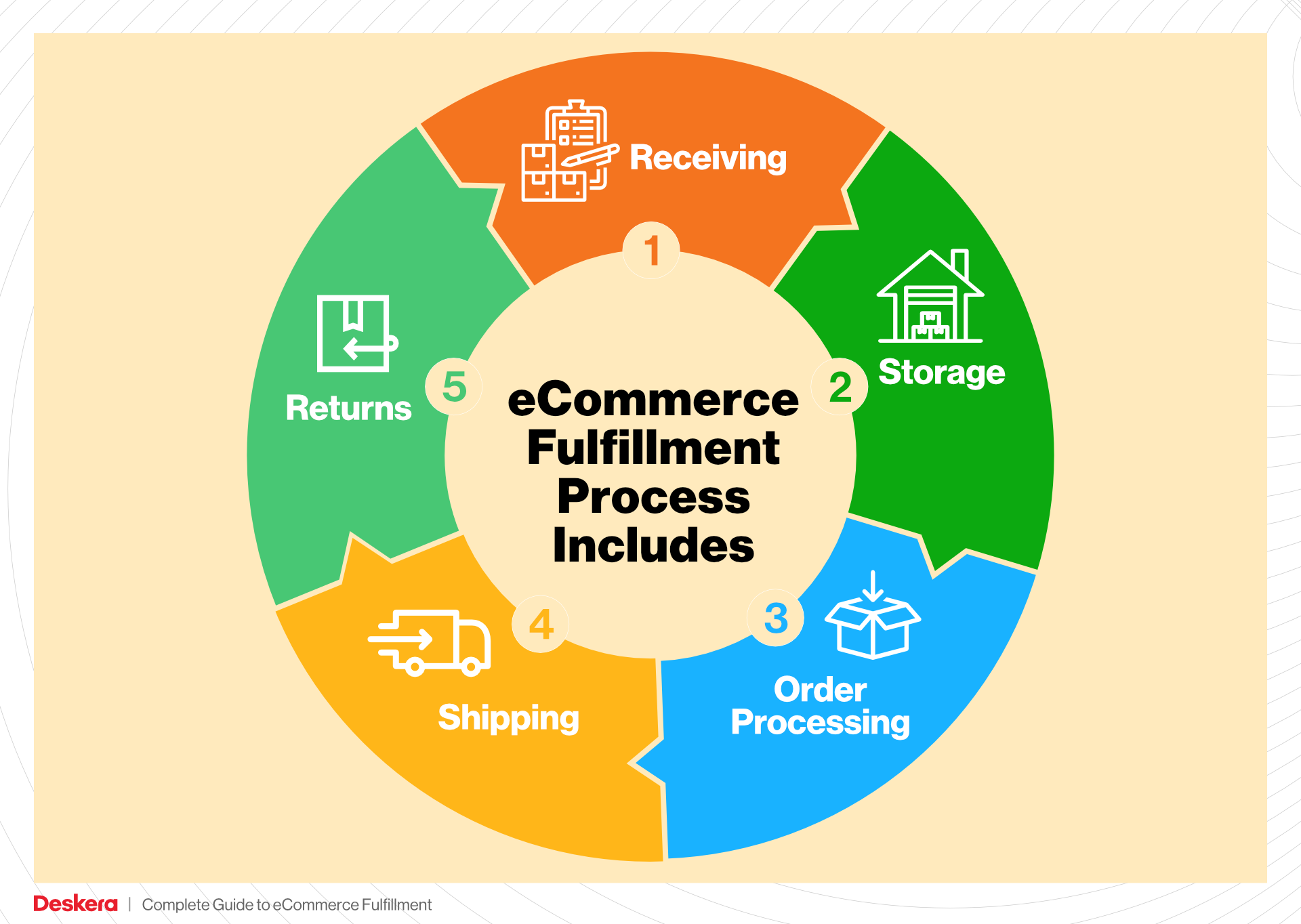
A key term associated with order picking is pick lists, which are documents or digital displays that guide warehouse staff on which items to collect and their respective locations. Effective order picking not only reduces the chances of errors but also enhances productivity by ensuring that workers are directed efficiently. An optimized picking process is crucial, as delays or mistakes at this stage can lead to order inaccuracies, returns, and increased operational costs.
4. Order Packing
After the items have been picked, they proceed to the packing stage. This involves securely packaging the products to protect them during transit. Proper packing is essential to minimize damage and returns, which can severely impact customer satisfaction and profitability.
During packing, businesses often employ packaging materials such as bubble wrap, boxes, and void fill to ensure the items are safe. Additionally, including packing slips and promotional materials can enhance the customer experience. The packing process should be systematic, utilizing packing stations that are equipped with the necessary tools and materials. Efficient packing not only ensures product safety but also contributes to a streamlined shipping process, as well-packed items are easier to handle and transport.
5. Shipping & Delivery
The final step in the order fulfillment process is shipping and delivery, where the packed orders are dispatched to customers. This stage involves selecting the most appropriate shipping methods based on factors such as cost, delivery speed, and destination.
A key term in this phase is shipping labels, which contain crucial information about the shipment, including the destination address and tracking number. Implementing an effective shipping strategy is vital, as it impacts delivery times and customer satisfaction. Businesses must choose reliable carriers and consider using software solutions that integrate shipping rates and options, allowing for real-time tracking. Streamlined shipping processes not only enhance customer experience but also help in managing logistics costs, ultimately contributing to the overall success of the e-commerce operation.
By understanding and optimizing each step of the order fulfillment process, businesses can significantly enhance their operational efficiency, reduce costs, and improve customer satisfaction, positioning themselves for growth in the competitive e-commerce landscape.
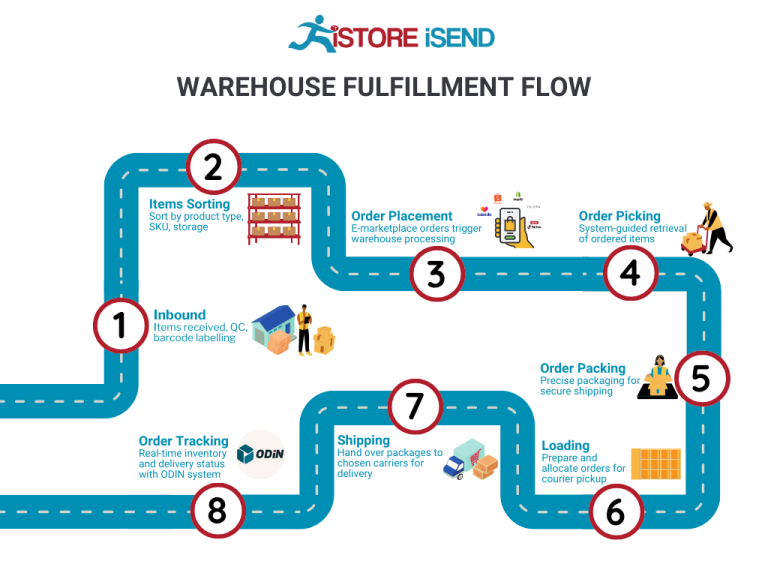
Comparing Fulfillment Models: In-House vs. 3PL vs. Dropshipping
Fulfillment Model Comparison
| Model | Who Handles Inventory | Best For (Business Stage) | Key Advantage | Key Disadvantage |
|---|---|---|---|---|
| In-House Fulfillment | The business itself | Startups to established businesses | Full control over inventory and operations | High overhead costs and resource demands |
| Third-Party Logistics (3PL) | A third-party provider | Growing businesses looking to scale | Cost-effective and scalable operations | Less control over inventory and processes |
| Dropshipping | Supplier or manufacturer | New entrepreneurs and niche markets | Low startup costs and minimal risk | Lower profit margins and longer shipping times |
In-House Fulfillment
In-house fulfillment involves a business managing all aspects of its inventory, order processing, packing, and shipping. This model is often favored by startups and established businesses that want to maintain full control over their operations. The primary advantage of in-house fulfillment is the ability to customize every aspect of the fulfillment process, from inventory management to packaging. Businesses can ensure quality control and brand consistency, which is essential for customer satisfaction and loyalty. However, the downside includes high overhead costs, as businesses need to invest in warehouse space, staffing, and technology. Additionally, managing fulfillment in-house can divert attention from core business functions such as marketing and product development, which can hinder overall growth.
Third-Party Logistics (3PL)
Third-party logistics (3PL) providers offer a comprehensive solution for businesses looking to outsource their fulfillment processes. This model is particularly beneficial for growing businesses that are scaling quickly and may not have the infrastructure to handle increased order volumes. By partnering with a 3PL, businesses can leverage the provider’s expertise in logistics, technology, and warehousing, allowing them to focus on their core competencies. The key advantage of using a 3PL is the cost-effectiveness and scalability it offers; businesses can adjust their fulfillment needs as they grow without the burden of significant upfront investments. However, a notable disadvantage is the potential loss of control over inventory and fulfillment processes, which can lead to inconsistencies in customer experience if the 3PL does not meet the expected service levels.
Dropshipping
Dropshipping is a fulfillment model where the retailer does not keep products in stock but instead transfers customer orders directly to the supplier or manufacturer, who then ships the products directly to the customer. This model is particularly attractive for new entrepreneurs and those operating in niche markets, as it requires minimal upfront investment and reduces financial risk. Since businesses do not need to invest in inventory, they can offer a broader range of products without the associated costs. However, dropshipping comes with its challenges, primarily lower profit margins due to reliance on suppliers for fulfillment. Additionally, shipping times can be longer, leading to potential customer dissatisfaction if suppliers are not reliable. Managing returns and customer service can also become complicated, as the retailer is not directly handling the products.
Conclusion
When choosing a fulfillment model, e-commerce business owners must weigh the advantages and disadvantages of each option in relation to their specific needs, business stage, and growth plans. In-house fulfillment provides control but at a higher cost, while 3PL offers scalability and efficiency. Dropshipping minimizes risk but may compromise profit margins and customer satisfaction. Understanding these dynamics will enable businesses to select the most appropriate fulfillment strategy, ensuring they can effectively meet customer demands while optimizing their operations for growth.
A Deep Dive into Amazon FBA: Pros, Cons, and Who It’s For
Understanding Fulfillment by Amazon (FBA)
Fulfillment by Amazon (FBA) is a service offered by Amazon that allows sellers to store their products in Amazon’s fulfillment centers. Amazon then takes care of storage, packaging, and shipping of these products, as well as handling customer service and returns. This service enables sellers to leverage Amazon’s extensive logistics network and customer base, facilitating easier access to a global market.
How FBA Works
-
Setting Up an FBA Account: Sellers begin by creating an Amazon seller account and opting for the FBA service. They can then list their products on Amazon, specifying that they will use FBA.
-
Shipping Products to Amazon: Sellers prepare their products according to Amazon’s packaging and labeling guidelines and ship them to Amazon’s designated fulfillment centers.
-
Storage and Inventory Management: Once the products arrive at the fulfillment center, Amazon stores them until they are sold. Sellers can monitor their inventory levels through the seller dashboard.
-
Order Fulfillment: When a customer places an order, Amazon picks, packs, and ships the product directly to the customer. This process is optimized for efficiency, ensuring fast delivery times.
-
Customer Service and Returns: Amazon handles all customer inquiries and returns on behalf of the seller, which alleviates the burden of customer service from the seller.
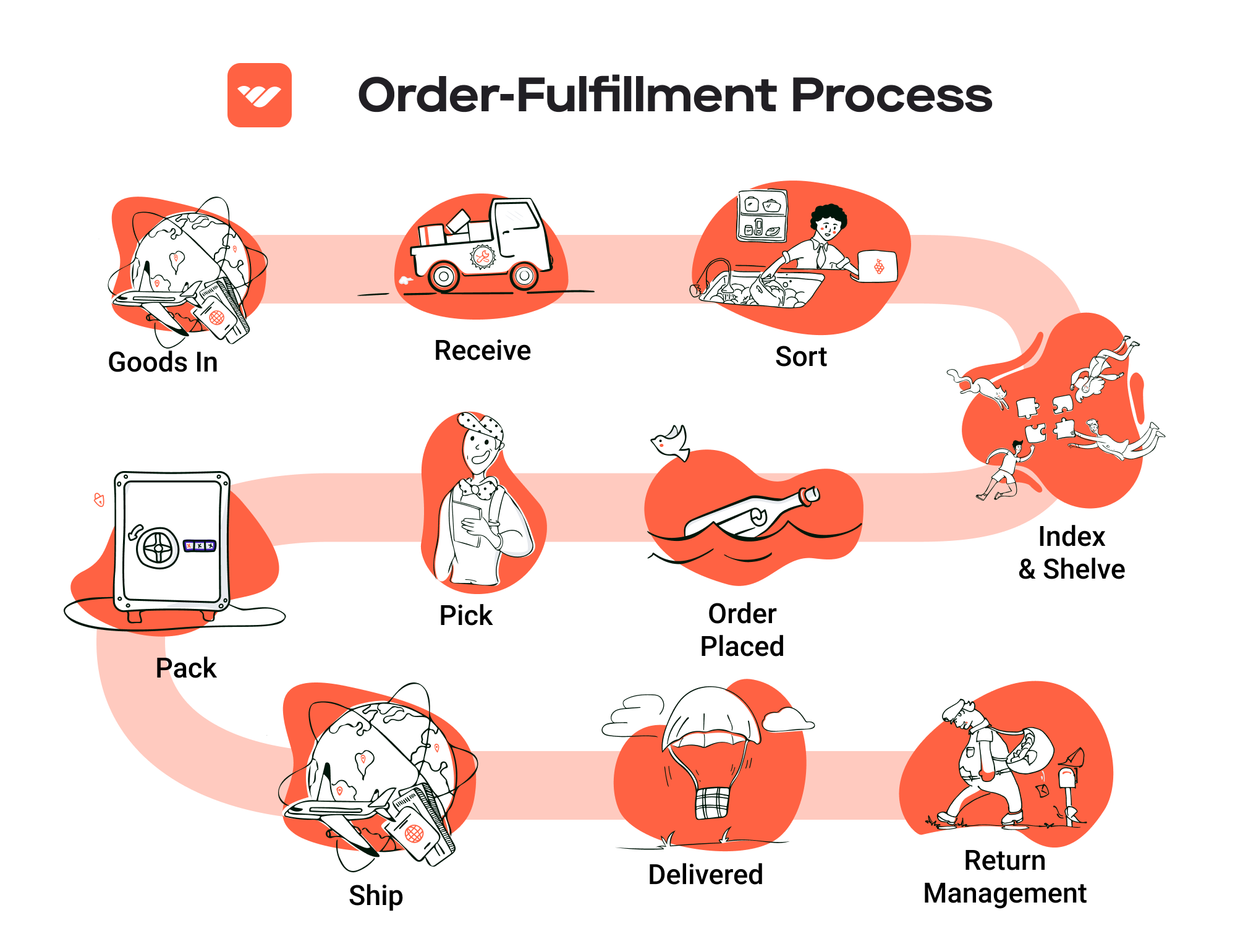
Pros of Using FBA
-
Prime Eligibility: Products fulfilled through FBA are eligible for Amazon Prime, which significantly increases visibility and attractiveness to customers who prefer fast, free shipping. This can lead to higher sales volumes.
-
Customer Trust: Customers often trust products sold through FBA more than those fulfilled by individual sellers. The reliability of Amazon’s service enhances the credibility of your offerings, boosting conversion rates.
-
Multi-Channel Fulfillment: FBA allows sellers to fulfill orders not only from Amazon but also from other sales channels. This flexibility means that sellers can manage their inventory and shipping through Amazon even if they sell on their own websites or other platforms.
-
Scalability: FBA provides a scalable solution for growing businesses. As sales increase, sellers can easily send more inventory to Amazon without needing to invest in additional warehousing or logistics.
-
Time Savings: By outsourcing storage, packing, shipping, and customer service, sellers can focus on other critical areas of their business, such as marketing and product development.
-
Global Reach: FBA facilitates international sales by allowing sellers to reach customers in other countries without the need to set up local distribution centers.
Cons of Using FBA
-
High Fees: FBA involves multiple fees, including storage fees, fulfillment fees, and long-term storage fees. These costs can quickly add up, especially for slow-moving inventory, impacting profit margins.
-
Strict Inventory Rules: Amazon has stringent requirements for inventory management, including restrictions on certain products and guidelines for packaging and labeling. Sellers must comply with these rules to avoid penalties.
-
Commingling Risks: FBA products may be commingled with inventory from other sellers, which can lead to issues if products are damaged or if counterfeit products are shipped to customers. This risk can undermine a seller’s reputation and lead to customer dissatisfaction.
-
Limited Control Over Shipping: While Amazon handles shipping efficiently, sellers have limited control over the shipping process, which means they must trust Amazon to deliver products on time and in good condition.
-
Potential for Account Suspension: Sellers risk suspension of their FBA accounts if they do not meet Amazon’s performance standards, which can be detrimental to their business.
Who is FBA Best For?
Fulfillment by Amazon is particularly advantageous for:
-
Small to Medium-Sized Businesses: These businesses often lack the resources to manage logistics effectively. FBA allows them to access Amazon’s logistics network without the overhead costs associated with warehousing and shipping.
-
Businesses with High Sales Volume: Companies that can consistently sell high volumes of products can benefit significantly from FBA’s economies of scale, as the per-unit cost of fulfillment decreases with higher sales.
-
Sellers Looking to Expand: If a seller is looking to expand into new markets or regions, FBA provides a straightforward way to do so without the need for local fulfillment infrastructure.
-
Entrepreneurs Focused on Growth: For those who want to focus on growing their business rather than managing logistics, FBA offers a hands-off approach to order fulfillment.
In conclusion, while Fulfillment by Amazon presents numerous benefits in terms of efficiency and access to a vast customer base, it also comes with challenges that require careful consideration. Businesses must evaluate their individual needs, sales strategies, and inventory management capabilities before deciding to utilize FBA as their fulfillment solution.
Core Services Offered by Fulfillment Centers
Inventory Management & Warehousing
Inventory management and warehousing are foundational services provided by fulfillment centers. This involves receiving, storing, and managing products in a warehouse environment. Fulfillment centers use sophisticated inventory management systems to track stock levels, manage reordering processes, and ensure that products are stored efficiently.
Benefits for E-Commerce Businesses:
1. Enhanced Visibility: E-commerce businesses gain real-time insights into inventory levels, allowing them to make informed decisions about reordering and stock management. This visibility reduces the risk of stockouts or overstock situations.
2. Cost Efficiency: By outsourcing warehousing, businesses can save on overhead costs associated with maintaining their own storage facilities, including rent, utilities, and staffing.
3. Scalability: As businesses grow, fulfillment centers can easily adjust storage capacity to accommodate fluctuating inventory needs without the need for significant capital investment.
4. Focus on Core Competencies: By delegating inventory management to a fulfillment center, e-commerce businesses can concentrate on marketing, product development, and customer engagement, ultimately driving growth.
Pick and Pack Services
Pick and pack services are integral to the order fulfillment process. This service entails selecting items from the warehouse shelves (picking) and then packaging them for shipment (packing). Fulfillment centers typically employ advanced technology, such as barcode scanning and automated systems, to streamline this process.
Benefits for E-Commerce Businesses:
1. Accuracy and Speed: Automated picking systems reduce the likelihood of human error, ensuring that the right products are selected and packed quickly. This leads to faster order processing times, which is crucial for customer satisfaction.
2. Customized Packaging: Fulfillment centers can offer tailored packaging solutions that align with branding strategies, providing an opportunity for businesses to enhance their customer experience through personalized unboxing.
3. Inventory Optimization: Efficient pick and pack processes allow for better inventory turnover, which is vital for maintaining cash flow and reducing holding costs.
4. Scalability During Peak Seasons: During high-demand periods, such as holidays or promotional events, fulfillment centers can ramp up their pick and pack operations to meet increased order volumes without compromising service quality.
Kitting and Assembly
Kitting and assembly involve grouping individual items together to create a single, ready-to-ship product. This service is particularly valuable for businesses that sell products that require assembly or that offer bundled items. Fulfillment centers can handle the entire kitting process, from assembling components to packaging the final product.
Benefits for E-Commerce Businesses:
1. Product Differentiation: Kitting allows businesses to offer unique product combinations or bundles, which can enhance value propositions and appeal to diverse customer segments.
2. Time Savings: By outsourcing kitting and assembly tasks, businesses can save significant time and resources that would otherwise be spent on in-house assembly.
3. Quality Control: Fulfillment centers typically have established quality assurance processes, ensuring that kitted products meet the desired specifications before shipment, which can lead to higher customer satisfaction and fewer returns.
4. Efficient Inventory Management: By assembling products before they are ordered, businesses can optimize their inventory levels, reducing the amount of stock that needs to be stored and managed.
Returns Management (Reverse Logistics)
Returns management, also known as reverse logistics, is a crucial service that handles the return of products from customers back to the fulfillment center. This process includes receiving returned items, inspecting them, restocking them if they are in sellable condition, or managing their disposal if they are not.
Benefits for E-Commerce Businesses:
1. Streamlined Process: Effective returns management systems ensure that returned items are processed quickly and efficiently, minimizing the impact on inventory levels and financial performance.
2. Enhanced Customer Experience: A well-managed return process can enhance customer satisfaction, as customers appreciate a hassle-free return experience. This can lead to increased loyalty and repeat business.
3. Data-Driven Insights: Fulfillment centers can provide valuable data on return reasons, helping businesses identify trends and areas for improvement in their products or services.
4. Cost Reduction: By managing returns efficiently, businesses can reduce the costs associated with handling returns, including shipping costs and restocking fees. This contributes to improved overall profitability.
By leveraging these core services, e-commerce businesses can optimize their fulfillment processes, improve operational efficiency, and enhance customer satisfaction, ultimately leading to sustainable growth in a competitive marketplace.
How to Choose a Fulfillment Partner: A 6-Point Checklist
Location & Warehouse Network
Importance: The geographical location of your fulfillment partner’s warehouses significantly impacts shipping times and costs. A partner with strategically placed warehouses can ensure faster delivery to your customers, enhancing satisfaction and potentially lowering shipping expenses.
Questions to Ask:
– Where are your warehouses located?
– How do you determine the optimal locations for your warehouses?
– Can you provide insights into your shipping times based on different regions?
– Do you have a network of warehouses that can cover my target markets efficiently?
Technology & Integrations
Importance: In today’s fast-paced e-commerce environment, technology plays a crucial role in streamlining operations. Your fulfillment partner should have advanced systems that integrate seamlessly with your e-commerce platform, inventory management software, and other tools.
Questions to Ask:
– What fulfillment management software do you use?
– How does your system integrate with popular e-commerce platforms (e.g., Shopify, WooCommerce, Magento)?
– Do you offer real-time inventory tracking and reporting?
– Can you accommodate custom API integrations if needed?
Specializations (e.g., cold storage, oversized items)
Importance: Depending on your product line, you may need a fulfillment partner with specialized capabilities, such as cold storage for perishables or handling oversized items. Choosing a partner that can meet these specific needs will prevent logistical headaches down the line.
Questions to Ask:
– What types of products do you specialize in handling?
– Do you have specific facilities for temperature-sensitive items?
– How do you manage the storage and shipping of oversized or bulky products?
– Can you provide case studies or examples of how you’ve handled specialized fulfillment needs for other clients?
Scalability & Capacity
Importance: As your business grows, your fulfillment needs will change. A good fulfillment partner should be able to scale operations to meet increasing demand without compromising service quality.
Questions to Ask:
– How do you handle seasonal spikes in order volume?
– What is your current capacity for storage and order processing?
– Can you accommodate sudden increases in order volume, and how quickly?
– What plans do you have in place for expanding your capabilities as your clients grow?
Pricing and Contracts
Importance: Understanding the pricing structure and contract terms is critical for budgeting and financial planning. Look for transparency in pricing and flexible contract options that align with your business needs.
Questions to Ask:
– Can you provide a detailed breakdown of your pricing structure?
– Are there any hidden fees (e.g., for storage, handling, or returns)?
– What are the terms of your contracts? Is there flexibility for short-term agreements?
– How do you handle price adjustments in response to market changes or increased order volumes?
Customer Support & Reviews
Importance: Reliable customer support is essential for resolving issues quickly and efficiently. Additionally, reviewing customer testimonials and case studies can provide insight into the partner’s reputation and reliability.
Questions to Ask:
– What type of customer support do you offer (e.g., dedicated account manager, 24/7 support)?
– How do you handle issues or discrepancies with orders?
– Can you provide references or case studies from current clients?
– What is your process for gathering and responding to customer feedback?
By carefully considering these six critical areas and asking the right questions, you can effectively assess potential fulfillment partners. This checklist will help you identify a partner that not only meets your current needs but also supports your business’s growth ambitions in the ever-evolving e-commerce landscape.
Understanding Fulfillment Pricing: A Breakdown of Common Fees
Initial Setup Fees
Initial setup fees are one-time costs associated with integrating your business with a fulfillment provider’s system. This fee covers the onboarding process, which may include:
- Account Setup: Creating a new account in the fulfillment provider’s system.
- Software Integration: Linking your e-commerce platform with the fulfillment provider’s software for real-time order management.
- Training: Providing necessary training to your staff on how to use the system effectively.
These fees can vary significantly depending on the complexity of your integration needs and the provider’s specific requirements. It is essential to clarify what is included in the setup fee to avoid unexpected costs.
Receiving Fees
Receiving fees are charged when inventory arrives at the fulfillment center. This fee typically covers the following processes:
- Unloading: The physical unloading of goods from transport vehicles.
- Inspection: Checking the inventory for quality and quantity against shipping documents.
- Stocking: Placing the inventory into designated storage locations.
Receiving fees are often calculated based on the number of pallets or boxes received. Some providers may charge a flat fee per shipment, while others might have a tiered pricing model based on the volume of goods received. Understanding this fee structure is crucial for budgeting purposes.
Storage Fees (per pallet/bin)
Storage fees are recurring charges for keeping your inventory in the fulfillment center. They are typically calculated based on the amount of space your products occupy, often measured in pallets or bins. The factors influencing storage fees include:
- Size of the Inventory: Larger products will take up more space, resulting in higher fees.
- Duration of Storage: Many providers charge monthly, while others may offer discounts for long-term storage.
This fee can also vary based on the season, as demand for storage space tends to increase during peak shopping periods. It’s wise to negotiate storage terms that allow flexibility based on your inventory turnover rate.
Pick & Pack Fees (per item/order)
Pick and pack fees are charged for the process of selecting items from storage and preparing them for shipment. This fee typically includes:
- Picking: Locating and retrieving the items from the storage area.
- Packing: Packaging the items securely for shipment.
These fees are usually calculated on a per-order or per-item basis. Some fulfillment centers may offer tiered pricing, where the cost per item decreases with higher order volumes. Understanding the pick and pack fee structure can significantly impact your overall fulfillment costs, especially if your business sees fluctuating order volumes.
Shipping Fees
Shipping fees are the costs associated with delivering your products to customers. This fee can be influenced by several factors:
- Shipping Method: Options like standard, expedited, or international shipping can vary greatly in cost.
- Destination: Shipping to remote areas may incur additional charges.
- Weight and Dimensions: Heavier and larger packages will generally cost more to ship.
Shipping fees can be calculated using various models, including flat rates, weight-based rates, or dimensional weight pricing. It’s essential to understand these variables to optimize your shipping strategy and provide accurate shipping costs to your customers.
Tips for Getting an Accurate Quote
-
Provide Detailed Information: When requesting quotes, offer as much detail as possible about your inventory, order volume, and shipping needs. This will help providers give you a more accurate estimate.
-
Ask About Hidden Fees: Ensure you understand all potential costs, including those that may not be immediately apparent, such as handling fees or penalties for storage overages.
-
Compare Multiple Providers: Don’t settle for the first quote. Comparing multiple fulfillment providers can help you find the best pricing model that suits your business needs.
-
Negotiate Terms: Many fulfillment centers are open to negotiation, especially if you can provide them with a high volume of orders or a long-term contract.
-
Review Contracts Carefully: Before signing any agreement, review the contract thoroughly to ensure you understand the terms and conditions, especially around pricing and fees.
By understanding these common fulfillment pricing models and following these tips, you can make informed decisions that help optimize your e-commerce operations while controlling costs.
Frequently Asked Questions (FAQs) about Fulfillment
1. What is fulfillment in e-commerce?
Fulfillment in e-commerce refers to the entire process of receiving, processing, and delivering orders to customers. This includes activities such as inventory management, order processing, packaging, shipping, and handling returns. A robust fulfillment strategy ensures timely delivery and enhances customer satisfaction.
2. What services are included in fulfillment?
Fulfillment services typically encompass several key activities:
– Storage: Safekeeping of inventory in a warehouse.
– Order Processing: Receiving and managing customer orders.
– Packaging: Preparing products for shipment according to specified requirements.
– Shipping: Delivering orders to customers through various carriers.
– Returns Management: Handling returned products efficiently.
3. What’s the difference between a warehouse and a fulfillment center?
A warehouse is primarily focused on storing goods, while a fulfillment center is designed to process orders and facilitate shipping. Fulfillment centers are equipped with technology and systems to manage inventory, orders, and logistics, allowing for quicker order turnaround and enhanced customer service.
4. What is a 3PL (Third-Party Logistics)?
A 3PL provider is a company that offers outsourced logistics services, which can include fulfillment, warehousing, shipping, and distribution. By partnering with a 3PL, businesses can leverage the provider’s expertise, technology, and network to streamline their logistics operations, reduce costs, and focus on core business activities.
5. How much do fulfillment services cost?
The cost of fulfillment services varies based on several factors, including:
– Order Volume: Higher volumes typically lead to lower per-order costs.
– Storage Fees: Costs associated with warehousing inventory.
– Shipping Rates: Charges based on weight, dimensions, and shipping destinations.
– Additional Services: Custom packaging, kitting, and returns management may incur extra fees.
It’s essential to request quotes from different providers to find the best fit for your budget.
6. How can fulfillment services help my business scale?
Fulfillment services can facilitate business growth by:
– Improving Efficiency: Automating order processing and inventory management reduces manual errors and speeds up operations.
– Enhancing Customer Experience: Timely and accurate deliveries boost customer satisfaction and loyalty.
– Expanding Market Reach: Fulfillment providers often have established networks that allow businesses to reach new markets quickly and efficiently.
7. What are the latest trends in fulfillment services?
Current trends in fulfillment services include:
– Automation: Utilizing robotics and AI to streamline operations and reduce labor costs.
– Personalization: Tailoring fulfillment processes to meet specific customer needs and preferences.
– Sustainability: Implementing eco-friendly practices in packaging and shipping to reduce environmental impact.
8. How do I choose the right fulfillment provider?
When selecting a fulfillment provider, consider the following factors:
– Experience and Reputation: Look for providers with a proven track record in your industry.
– Technology and Integration: Ensure their systems can seamlessly integrate with your e-commerce platform.
– Scalability: Choose a provider that can grow with your business and handle increased order volumes.
– Customer Support: Assess their responsiveness and support services to ensure you have assistance when needed.
9. What are the benefits of using fulfillment services in Thailand?
Utilizing fulfillment services in Thailand offers several advantages:
– Strategic Location: Thailand’s geographical position makes it a gateway to Southeast Asia, facilitating regional distribution.
– Cost Efficiency: Local fulfillment can reduce shipping times and costs for businesses targeting Southeast Asian markets.
– Experienced Providers: Companies like Bình An Express have extensive experience in navigating the logistics landscape in the region.
10. How can I track my orders during the fulfillment process?
Most fulfillment providers offer tracking systems that allow businesses and customers to monitor order status in real-time. You can typically access tracking information through a dedicated dashboard or by receiving notifications via email or SMS, ensuring transparency and keeping customers informed throughout the shipping process.
Conclusion: Is Outsourcing Fulfillment the Right Move for Your Business?
Key Takeaways on Outsourcing Fulfillment
Outsourcing fulfillment can be a transformative decision for your e-commerce business, offering significant advantages that can help you scale effectively. One of the primary benefits is the substantial time savings. By partnering with a fulfillment service, you can offload time-consuming tasks such as inventory management, order processing, and shipping logistics. This allows you to redirect your focus towards strategic initiatives like product development and marketing, ultimately fostering business growth.
Additionally, scalability is a crucial factor. As your business grows, so do your operational needs. A reliable fulfillment partner can adapt to fluctuations in order volume, ensuring that you maintain efficiency without the need for significant investment in infrastructure. This flexibility is particularly vital in today’s fast-paced e-commerce environment, where consumer demand can change rapidly.
Expertise is another compelling reason to consider outsourcing. Fulfillment services bring specialized knowledge and technology that can enhance your operational efficiency. From inventory management systems to shipping optimization, these partners are equipped with the tools and experience necessary to streamline your logistics processes, reduce costs, and improve customer satisfaction.
However, selecting the right fulfillment partner is paramount. A partner that aligns with your business goals and understands your market can be the difference between success and stagnation. Therefore, it is essential to conduct a thorough evaluation of potential partners, focusing on their capabilities, reputation, and alignment with your business needs.
Take Action
As you contemplate whether outsourcing fulfillment is the right move for your business, take a moment to audit your current shipping and logistics processes. Identify pain points and areas for improvement. Consider reaching out to fulfillment service providers to explore how they can elevate your operations. The right partnership could unlock new growth avenues and position your brand for long-term success in the competitive e-commerce landscape.
Important Disclaimer
⚠️ Important Disclaimer
The information in this guide is for educational purposes. Fulfillment services, pricing, and platform features change frequently. Always conduct your own due diligence and consult with providers directly before making business decisions.

